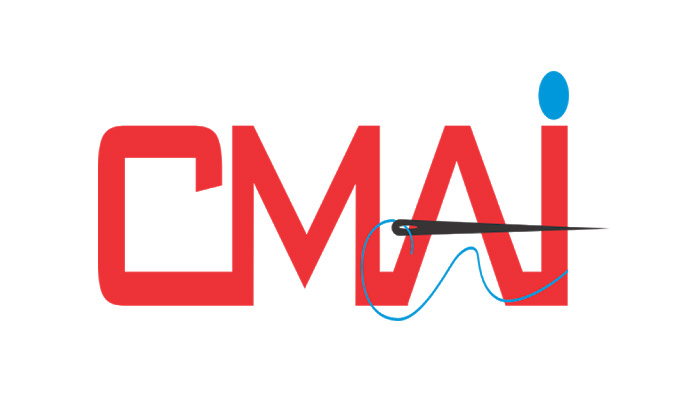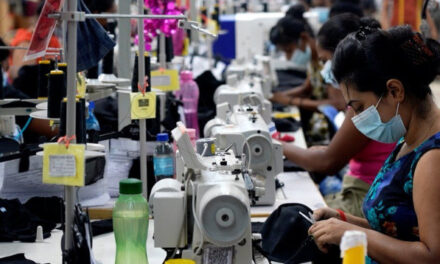
CMAl’s Apparel Index aims to set a benchmark for the entire domestic apparel industry and helps brands in taking informed business decisions. For investors, industry players, stakeholders and policy makers, the index is a useful tool offering concrete and credible information and is an excellent source for assessing the performance of the industry. The Index is analysed on assessing the performance on four parameters: Sales turnover, sell through (percentage of fresh stocks sold), number of days of inventory holding, and investments (signifying future confidence) in brand development and brand building
Apparel Index for Q1 April-June FY 2018-19 has given out positive signals signaling a recovery in the market. Cumulative growth is at 3.24 points which is higher than 2.88 points from the last quarter; Big brands (Mid, large and giant) together clocked in growth at 6.55 points (Less compared to 7.61 points last quarter). Small brands in contrast are still lagging behind with a low growth at 1.2 points. (Higher than last quarter’s 0.75 points).
At 3.24 points, the Q1 index has certainly been better than the previous quarter’s (Jan-March FY 2017-18) 2.88 points; and Q1 of the previous year (April- June 2017-18) at 2.77 points. While big brands together have collectively grown at 6.55 points, individually mid, large and giant brands have grown at 6.33, 5.95 and 8.07 points respectively (previous quarter figures were: 6.26, 8.50 and 10.00 points). In fact, Mid Brands have shown slight buoyancy while Large and Giant Brands grew lesser than the previous quarter.
Like previous quarters, the biggest brand group – Giant brands are still growing the most, outgrowing recessionary was moderate while in the same quarter last year, it grew by 11.00 points. Small brands, at 1.20 points, seem to be pulling along and to an extent overall growth is being pulled down by smaller players, who are still not in a position to outsmart their business practices. In fact, small brands’ dipping sales turnover (at -0.1 points) is certainly a cause for concern. However, they have managed to grow at an index value of 1.2, riding on increased investments to hold inventories as lesser sales were recorded.
Sales turnover, inventory holding & investments on the rise
Sales turnover in Q1 reflected an index growth of 1.88 (higher than previous quarters 1.6 points). Nearly, 53 per cent brands reported an increase in this quarter. The highest percentage of brands that recorded 41 per cent or more growth, were in the mid brands group followed by large brands. Small brands lost sales turnover by 0.1 points, the second time in the last four years. As French menswear brand Celio’s CEO Satyen P Momaya says, “Increase in sales turnover is a combination of store growth and expansion. Our store growth has been between 0-6 per cent and overall growth is better.”
Most of the brands have reported higher sales turnover riding on new store openings. “Our sales turnover is increasing as expansion is going on and more stores are being added. Around 10 to 12 new stores were added,” explained Deepak Singhla, Sales Head, Cantabil. Similarly, Bhushan Gupta, Head of Business Development, Breakbounce pointed out, “Our sales turnover increased as Breakbounce is a new brand with a rapid growth pattern. Every year, new sales points are being added and there is an increase in sales turnover.”
However, for nearly 24 per cent of brands sales turnover remained the same. As brand Era’s partner Nikhil Furia says, “We saw an increase in sales turnover by targeting a lot of new territories in Tier II, III cities.”
Sell through: It recorded an index growth of 1.23 in this quarter. Nearly 51 per cent of brands reported an improvement in Sell Through. However, 42 per cent brands experienced no change in their Sell Through as it remained the same; and around 7 per cent brands recorded a dip in the Sell Through growth. “Our Sell Through rates have improved compared to last year over merchandises, which has led to faster realisation of inventory and hence, expenditure has not increased much,” added Momaya.
Inventory holding: Growth under this head was at 1.58 points in Q1, higher than 1.1 points recorded in the previous quarter. Almost 55 per cent of respondents across brands have said that their inventory holding moved north this quarter, a significant number indeed. Increase in inventory holding impacts the overall index negatively. Higher inventory holding indicates more leftovers on shop shelves or lower sales in previous quarter. As Pepe Jeans’ Regional Manager Manish Kapoor says, “We have been prudent in our orders and accordingly since our inputs have increased, inventory has gone down.”
Investments: One positive aspect of Q1 is that fresh Investments have gone up by nearly 1.70 as against the 1.30 points from the last quarter. Overall, nearly 77 per cent respondents reported a rise in investments which is much higher than 54 per cent in the previous quarter, indicating that most brands have had to invest to manage and grow which means growth doesn’t seem to be coming easily. “We are exploring new markets and are on an expansion mode,” says Mayank Jain, Marketing Head, Monte Carlo.
‘Good to excellent’ outlook for the festive quarter
Around 56 per cent brands say the outlook for the next quarter is ‘Good’, while 11 per cent believe it will be ‘Excellent’. Around 32 per cent feel the quarter will be ‘Average’ in terms of business, however, only 1 per cent say, it will be ‘Below Average’. Comparatively, the outlook recorded in the previous quarter was ‘Average To Good’. Generally, in Q2 of the financial year, numerous festivals are lined up and sales picks up. Thus, the overall mood is positive.



















